The Versatility of Saree: Dressing Up or Down for Any Event
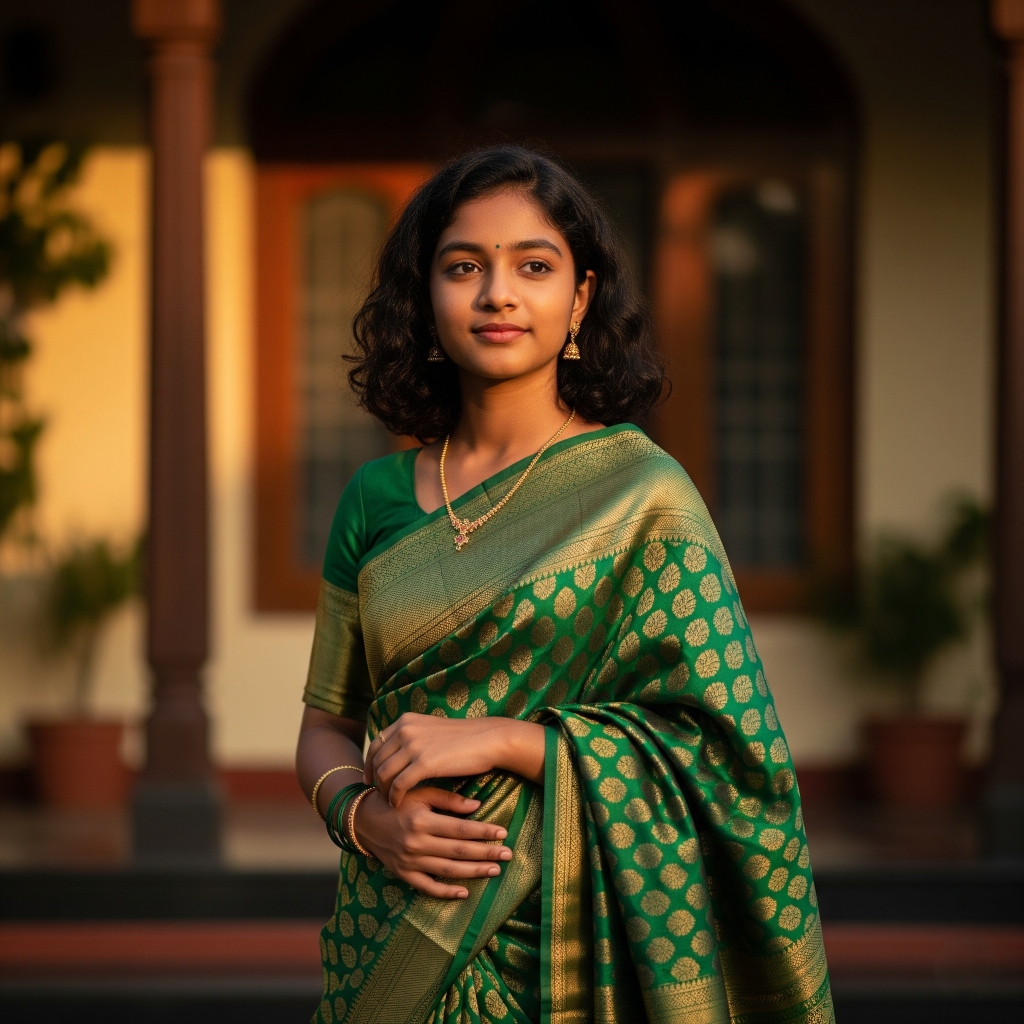
A saree is an evergreen attire for any occasion, especially for women. Actually, with more than 272,269 items on a platform alone, choosing the perfect drape is a daunting task for many.
Whether you want to purchase a dazzling wedding saree for a woman, a comfortable cotton saree for a woman, a glamorous party wear saree for a woman, or a traditional silk saree for a woman, the sky is the limit. These collections range from Banarasi, Kanchipuram, and Paithani silks, as well as cotton, chiffon, and georgette, featuring bright colors, prominent embroidery, and intricate pattern designs.
This guide is intended to provide a detailed explanation of everything you need to know in order to select the perfect saree for you. This includes fabrics for different body types, matching designs for occasions, regional styles, and pro styling tips that will enhance your overall look. What’s more, we’ll take you through simple draping techniques that will practically guarantee your confidence, making this helpful whether you’re a complete novice or just someone who’s never quite mastered the art of draping.
Understanding Saree Fabrics: The Foundation of Style
This is because in showcasing the fabric, you display the very soul of the saree: what is felt, how it is draped, and the same look it accords to the wearer. Choosing the right material to suit one’s ideal drape is the most crucial factor that one should consider in making a perfect choice. So why not look at the special features each of the popular saree fabrics offers?
Cotton saree for women: Comfort and elegance
Cotton sarees have rightfully earned their title as the “queen” of all sarees. These breathable wonders are cherished for their ability to regulate body temperature, making them ideal companions for hot and humid Indian weather. What makes cotton truly special is its versatility across the seasons, providing coolness in summer and warmth in winter.
Other than being comfortable, cotton sarees are quite sturdy. They can last well with a little bit of care and do not lose their shape, color, or texture as the years pass. They are also affordable and do not compromise on quality or finish.
There are many regional varieties in the cotton family, and each of them has distinct characteristics:
Jamdani cotton: Lightweight with intricate patterns
Mangalgiri cotton: Minimalistic style with fine stripes and contrasting borders
Sambhalpuri cotton: Features the unique ‘Ikat’ dyeing technique
Cotton-linen blends: A 2025 innovation opening new avenues for casual wear
Georgette and chiffon: airy and flowing
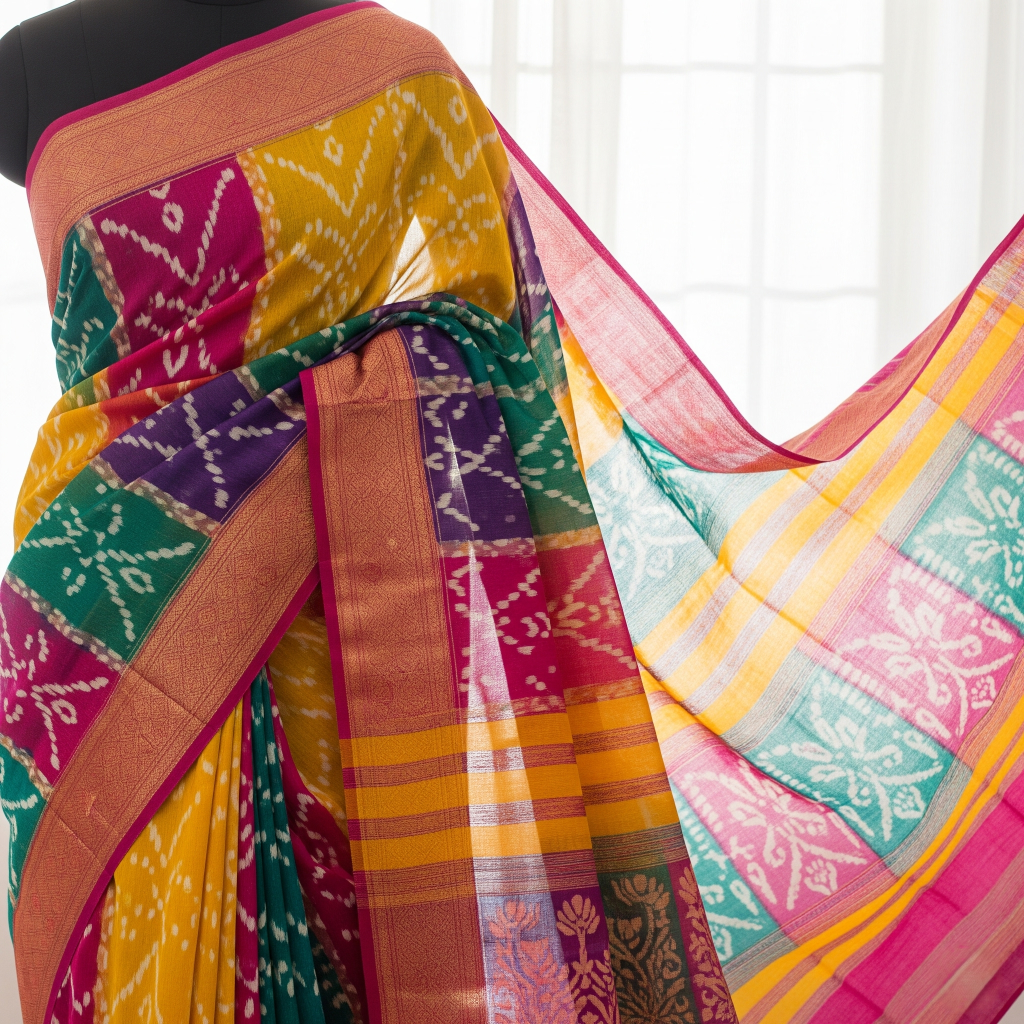
These two are often confused, but they belong to two different styling categories. Georgette fabric carries this slightly harsh, abrasive feel to it, with a bouncy look standing out for this puckered, twisted style. They are silk, rayon, or polyester blends. Georgette sarees hold pleats well, lending a little structure in silhouette, remain wrinkle-free, and are easy to maintain.
Chiffon sarees, on the other hand, are glowy soft and smooth with just the right amount of transparency. Being comprised of cotton, silk, nylon, or rayon twisted yarns, it creates a slender drape that makes it highly flattering for fuller figures. It combines wonderfully with light, creating a soft shimmer that is perfect for an evening occasion.
Both fabrics underwent a makeover in the 2025 edition. For Georgette, the textural range was extended, supported by digital printing that can yield intricate patterns and photorealistic designs.
Silk saree for women: rich, heavy, and traditional
Silk sarees are considered the finest in luxury Indian ethnic wear. Made from various silk types interwoven with metal, silk, and other fibers, these garments represent a millennium of craftsmanship and tradition.
The pure mulberry silk, being the highest quality, is soft,…
If you consider regional silks, then they have thread stories of their own thread stories:
Kanchipuram or Kanjeevaram: The so-called “OG star saree,” with temple borders, checks, and stripes, her floral motifs glow in stark contrast against the shimmering zari
Banarasi: The traditional beauty, very intricate gold and silver brocade
Tussar or Kosa: Wild silk with a natural gold tinge
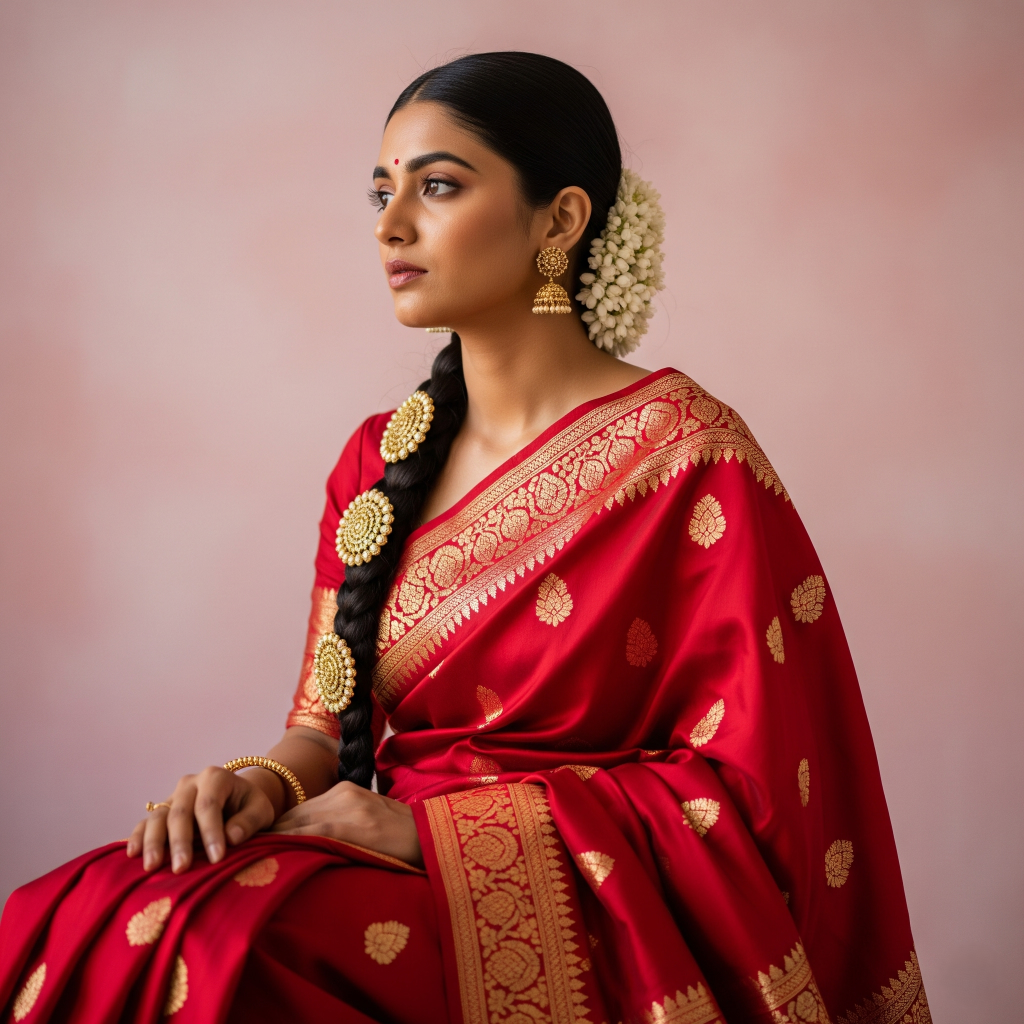
Organza and net: The new-age edge
Organza has become something of a rage in the saree world. The skinny, silky sheer one can be pure silk or synthetics-just keep thin, need to know-that lend it a delicate yet structured appearance. The 2025 take on organza adopts a modern lore of subtle 3D floral appliques and gradient effects, making these celestial pieces the perfect fit for a trendy bash.
Organza is popular for having a coarse base texture that acts as the ideal surface for either hand-painted or block-printed designs displaying floral motifs and patterns. The transparent look and subtle glow have won the hearts of women across age groups.
Net sarees otherwise offer a semi-transparent appearance with either visible net patterns or sheer looks. These creations, oftentimes decorated with rather elaborate embroidery, certainly glamorize any casual or formal wardrobe.
Selecting a Saree by Occasion
Choosing the right saree is not only about fabric or design but rather about matching your outfit with the occasion. The right saree can make you stand out in any function, be it a wedding or a workplace meeting.
What to look for in a wedding saree for women
From the time of marriage celebrations, the fabric and design of the saree jump into the spotlight. Luxurious fabrics of silk, velvet, and organza form the basis for a memorable wedding look. In the selection of a wedding saree, consider the following:
Fabric type: Kanjeevaram silk and Banarasi sarees are always preferred for their lavishness as well as their cultural value.
Color: Deep reds and maroons are traditional colors of prosperity, while the young lot of modern brides tend to dabble with jewel tones, pastels, and midnight black for a late-night occasion.
Accentuations: Apply intricate zari work, detailed embroidery, and rich brocade that speak of a poem of art.
Time of the event weighs crucially-light-heavy sequins, and heavy embroidery is a good fit for evening functions, whereas light-weight sarees made of organza suit daytime ceremonies best. Your style will ultimately demand either the accepted form of red and gold or something entirely off the cuff.
Party wear saree for women: Mutually glamorous and chic
In 2025, party wear sarees will become a perfect blend of traditional craftsmanship and modern trends. To make your indelible impressions at parties, fabrics like sequin, net, georgette, and chiffon are the best. They carry the right balance between structure and flow.
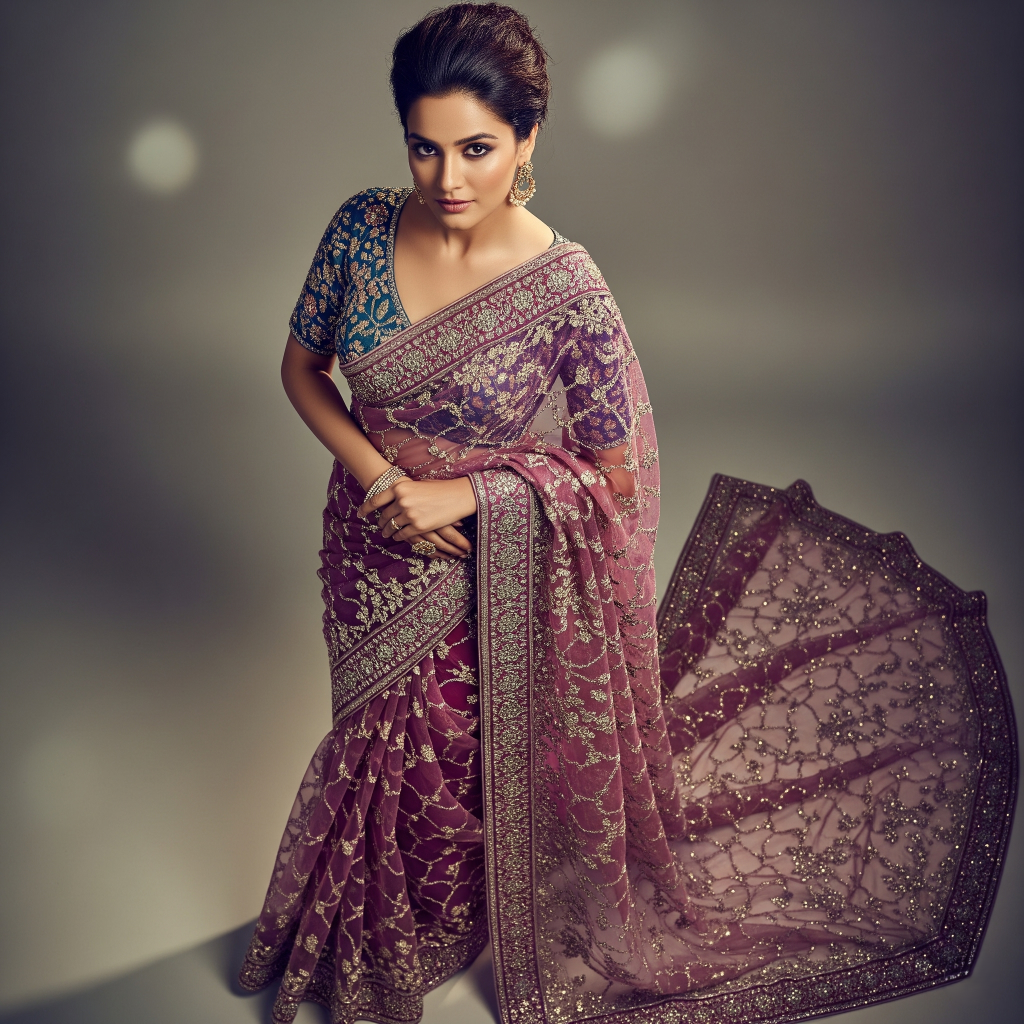
Mint green hand-embroidered Banarasi silks for early-morning events, gold satin chiffon for sheer glamor, and ruby-toned designer outfits for grand affairs-with these party sets should be able to end any debate about what to wear to a party.
Remember to accessorize with statement-heavy party saree ensembles—bold jhumkas or necklaces for plain sarees, or understated jewelry for clothes that speak on their own.
Office wear and casual wear Saree: trends that stay sutable
Worthy of professional environmental respect are sarees that uphold tradition, while practicality follows suit. Cotton takes the limelight for fabric selection, all breathable and comfortable through long work hours. These sarees mostly carry very subtle designs, sometimes flickering with a contrasting pallu, and are very light on decorations.
For casual wear, lightweight cotton that never kills the pleats with constant re-sorting is apt. Neutral tones or soft pastel colors with very simple designs give a bespoke and classy look to professional environments. Jamdani cotton and tussar staple styles with gicha pallu are perfect blends of tradition and industry.
What defines office wear sarees is their utility and style capabilities that allow these sarees to journey from a hard-grip meeting to being fun and comfy at some social after-work gathering.
Festive saree: Colors and embellishments that shine
Since festive occasions call for sarees that reflect the vibrancy of celebration, bright colors with traditional designs are demanded. Silk, brocade, and zari-embellished sarees manage to maintain the festive aura of cultural celebrations.
During festivals, opt for bright and auspicious colors such as yellow, green, and orange, with mild embellishments. Festive and traditional sarees like Patola, Bandhani, and Chanderi are apt for these glorious occasions. The rich contrasting textures and Kulluian motifs of these sarees modernize Indian textile culture.
The exhibition of happening design and functionality should be considered when selecting the festive saree, as one must be able to stand out from the crowd while remaining comfortable during long ceremonies. Bearing in mind that the festival’s traditions may carry distinct regional color and styling associations can be beneficial.
Well-Known Designs and Regional Styles of Saree
Indian regional styles in sarees are the products of centuries of artistic evolution, each weaving technique and motif telling distinctive cultural stories.
Banarasi and Kanjivaram: Classics beyond Time
Banarasi sarees are considered treasures in the Indian textile lineage. These luxurious pieces originate in Varanasi, where finely woven silk undergoes the work of intricate gold and silver brocade known as zari. Mughal motifs of intermingling floral and foliate patterns, paired with kalga (paisley) and bel patterns, essentially characterize these products. The extreme edge holds another soul of character through the typical jhallar—a string of upright leaves.
A single Banarasi could demand 15 days to complete, to six months, depending on nuances, testimony to the age-old skills passed down from one generation to another. These sarees fall into four varieties:
Pure silk (Katan): Traditional motifs combined with extremes in durability
Organza (Kora): Feathery-with-silver-and-gold-zari-work
Georgette: For the modern woman who likes structured drapes
Shattir: Simpler designs for that instant, everyday glam
Ways to Style Your Saree Like a Pro
A saree can never look too good or too bad if every finishing touch is right. Thus, along with the fabric and designs, the way the saree is styled decides whether a saree looks mundane or classy.
Some blouse designs to uplift your look
Well-fitted blouses act as the importance giver to your saree ensemble. For women and their traditional silk sarees, traditional triched blouses with threadwork, sequins, and embellishments bring thousands of dollars’ worth of ambiance. When working with highly ornate sarees, stick to minimalist and sleek plain blouses that offer balance in all.
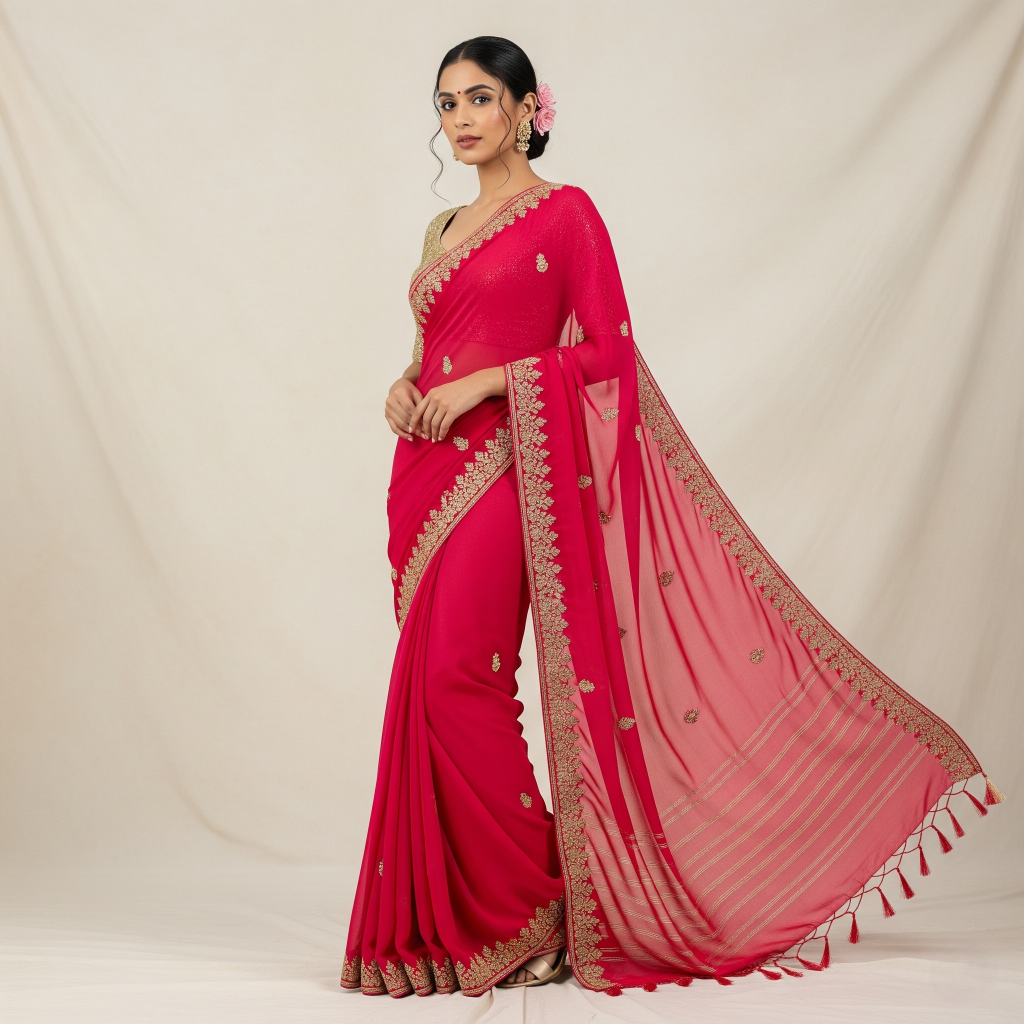
In summer weddings, organza sarees get teamed with heavily embroidered blouses for their light, breezy silhouette. Banarasi sarees with raw silk blouses are great for winter festivities, for they offer a majestic and timeless look that keeps you warm, as well as making you look gorgeously elegant.
Experimenting with necklines goes far. Deep V necks and boat necks are great, based on your body type and personal style. They will be the upcoming 2025 trending designs of-
Designer backless blouses for cocktail and evening events
Puff-sleeve blouses from whimsical vintage land
Crop top style blouses for all-purpose Indowestern fusion
Right accessories: Jewelry, bags, and shoes
Let the complexity of your saree guide you in choosing jewelry. Heavily embellished sarees go very well with minimalistic jewelry, whereas basic cotton varieties should be set off with chunky silver or gold pieces.
Footwear remains so often neglected, yet contributes so much to the look of a person. For special occasions, heels lengthen the legs, but on days when standing and walking are involved, comfortable flats or sandals are indeed better. Gold or silver sandals are favored mostly with silk sarees because they match their natural sheen.
A more elegant look can be created by wearing a traditional kamarbandh (belt) that holds the saree and highlights the waist. Finish off the look by carrying an intricately designed clutch or potli bag that matches the colors and style of your saree.
Master Draping Techniques
The right cut and draping of a saree gives elegance to a few meters of cloth and flatters all body types. By being conversant with various draping styles, you can unfold your saree’s beauty along with your style.
Nivi Style: The Most Popular Draping
The Nivi style is still the most well-recognized saree style throughout India. It was formerly the ostensible style of wearing a saree among the Andhra women. The saree, tucked into the waist, is pleated in the center in this highly versatile method. The pallu then elegantly drapes over the left shoulder to create a beautiful silhouette.
Tucking the saree at the navel, wrapping it around the waist. Formation of 5-7 even pleats, each 5-6 inches about, following the tuck right in the center of the waistline. To allow free movement and sustain structure, the pleats should fall in the right direction.
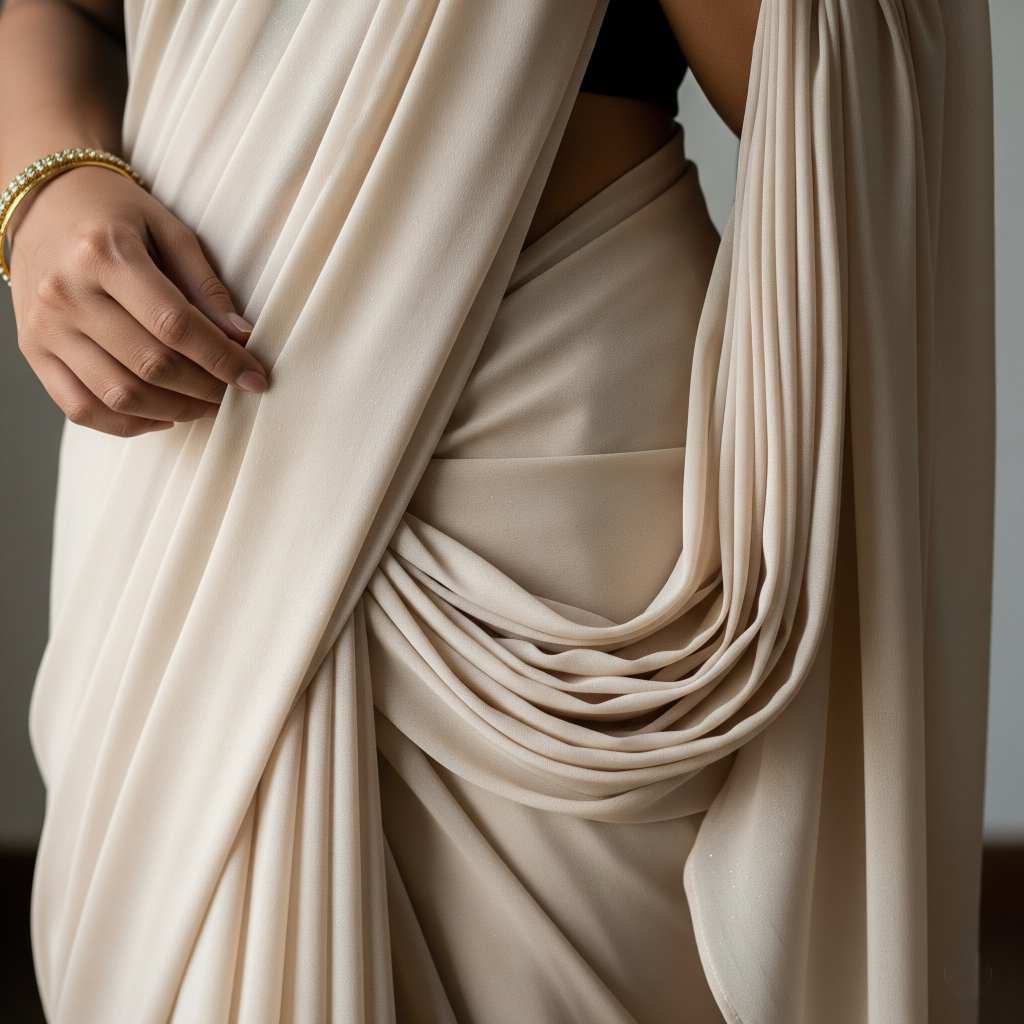
Gujarati and Bengali styles: Cultural elegance
The Gujarat style, commonly known as Seedha Pallu, offers somewhat contrasting manners of draping so that from the back it goes over to the right shoulder rather than the left. In contrast to almost all other styles, this drape moves anti-clockwise. Spread across the chest, the pallu creates a juxtaposition that showers fancy with intricate pallu designs.
Bengali style, on the other hand, bears a distinct hallmark, whereby both pleats and pallu lie on the left shoulder. The traditional white and red combination strikes a symbolic much in Bengal. The length of the pallu used for draping is always more than other styles, and it is also used to cover the head during auspicious occasions.
Ready-to-wear Saree: Convenience with a measure of style
Redimentary in keeping the ancient art of draping alongside pre-stitched pleats and pallu into handy combinations that can be put on within a few minutes, these contemporary alternatives have taken away draping-induced mental anguish, yet provide the groomed appearance of any perfectly styled saree.
From lightweight cotton to heavy silks, these inventions come with zips or hooks and occasionally with a built-in petticoat to wave off the draping pain. Primarily designed for the woman on the go, such sarees prove to be ideal for an amateur, a working woman, or even travel situations where traditional draping may be an uphill task.
Conclusion
A perfect saree is just another way of describing the beautiful blend of tradition and individual expression. We traversed the extensive world of sarees through this guide: from breathable cottons meant for everyday, to luxurious silks for family heirlooms. Fabrics are, in a very literal sense, the foundation of your saree selection journey, considering which determines your comfort as well as the way of visual impact.
In choosing an ideal drape, the body type, the occasion, and personal taste need to go hand in hand. In wedding settings, Banarasis or Kanjivarams need the utmost splendor, whereas in office settings, a subtle cotton elegance prospers. For a party, one could adorn the saree with contemporary designs and embellishments, marking how versatile this attire has become across different settings.
Regional styles such as Bandhani and Kalamkari lend cultural richness to your wardrobe, each narrating distinct stories in their Characteristic designs and techniques. These conventional concepts then march side by side with the latest innovations, be it ruffled details or digital prints.
Styling is what makes the difference in your final look. Rightly implementing a blouse design, accessories, and hairstyle can convert any beautiful fabric into a fully spirited sartorial expression of yours. Also, learning various draping techniques can allow adaptation for this age-old attire in several ways to suit any occasion and mood.
We have always agreed that sarees are the single-most flattering attire for every body type and link the wearer to millennia of artistic tradition. Ready to wear or put on with the traditional style: Your saree collection gets more meaningful with every thoughtfully chosen piece.
Remember, the perfect saree synthesizes artistry, cultural meaning, and personal style. Your evolution and memories wrapped in those six yards of sheer elegance will happen over time.
